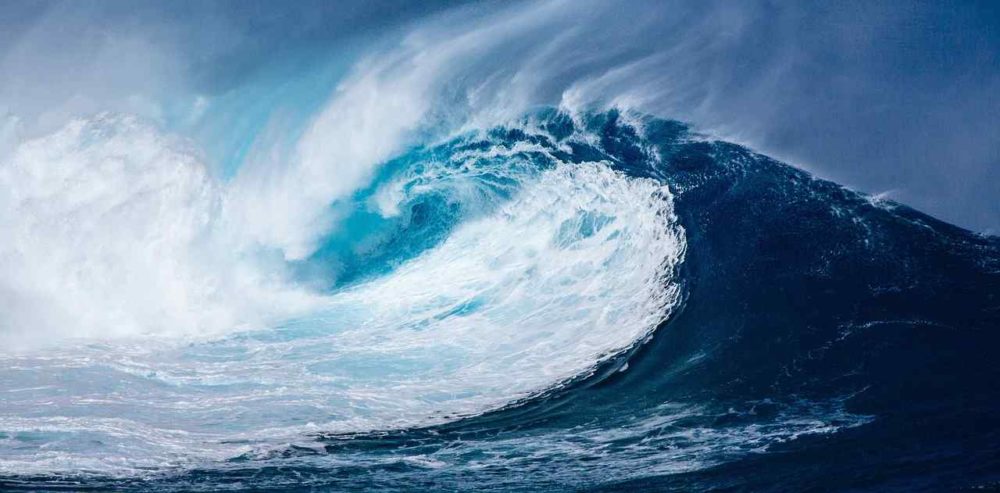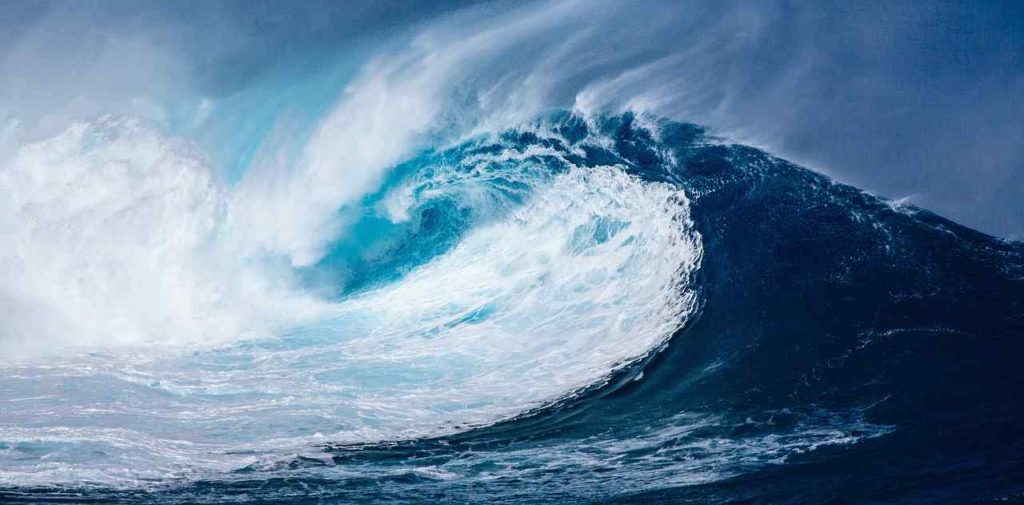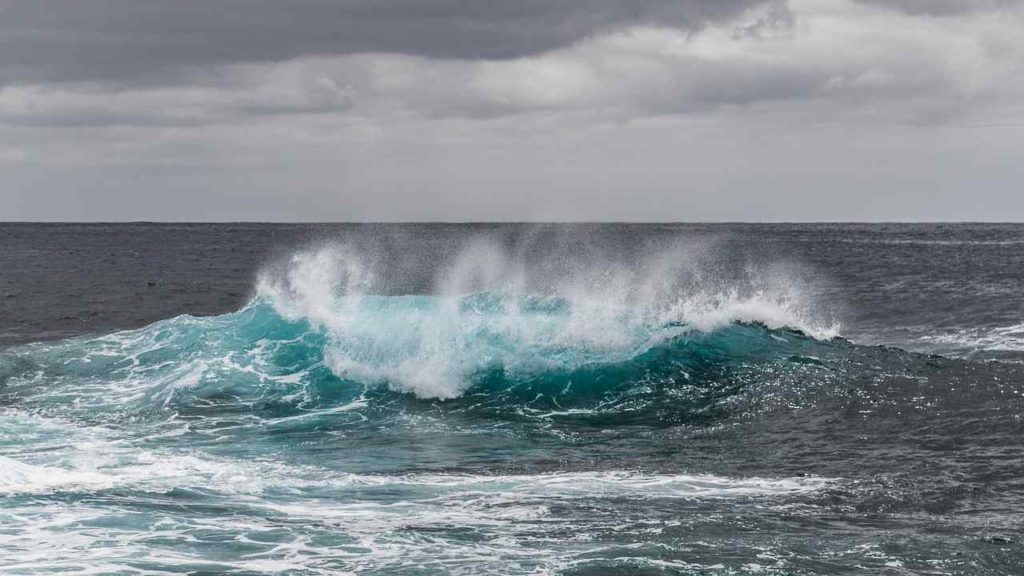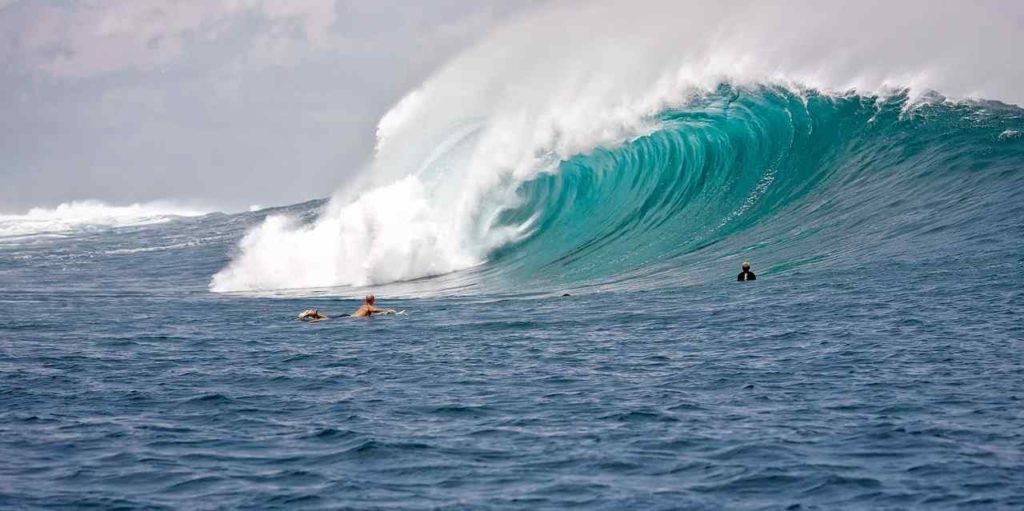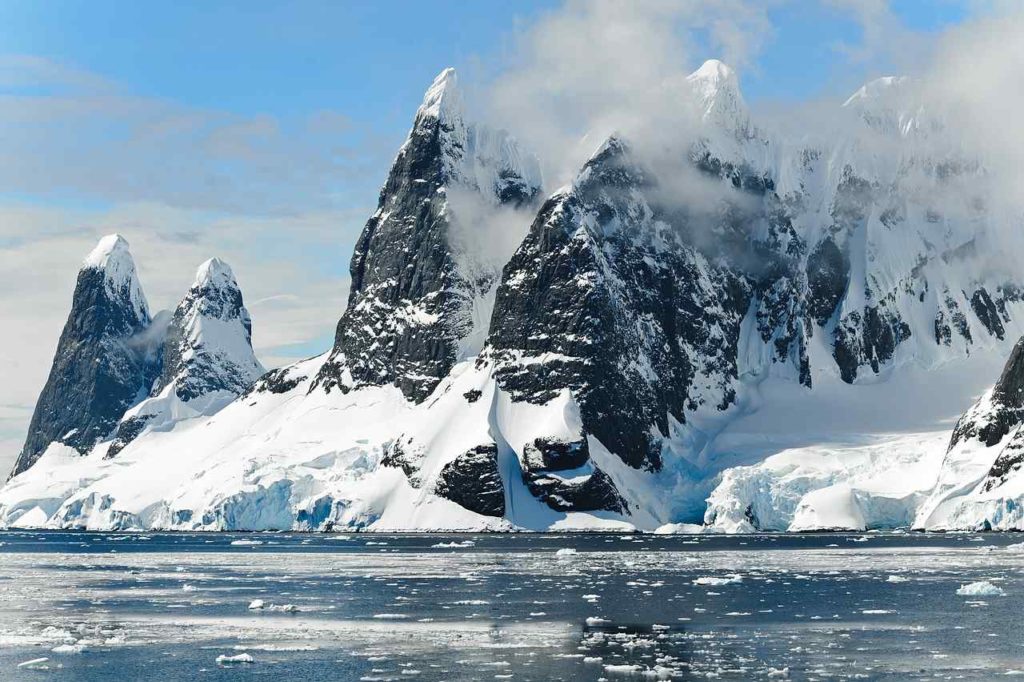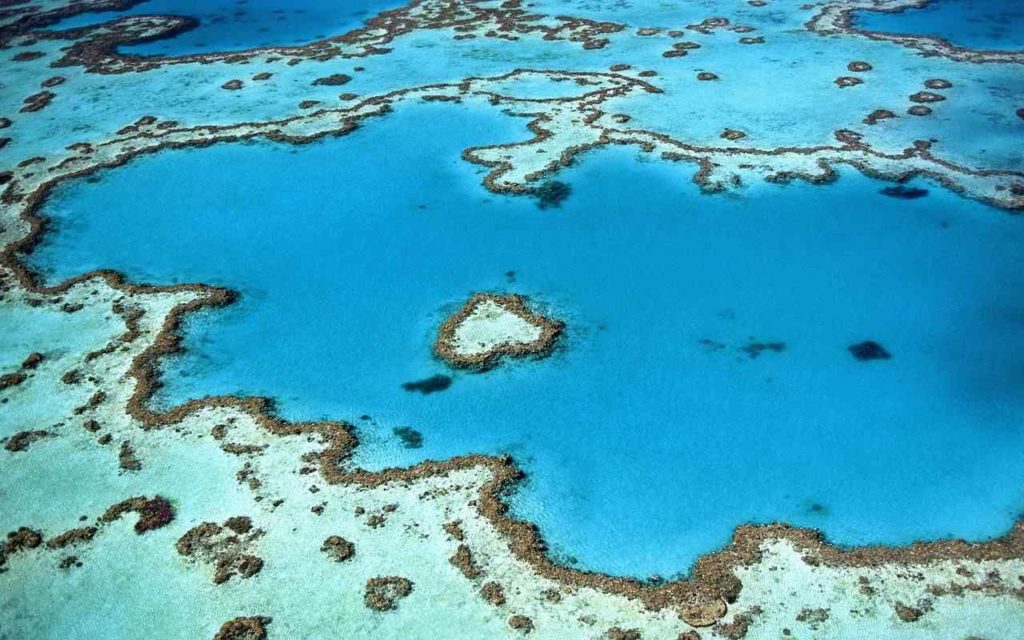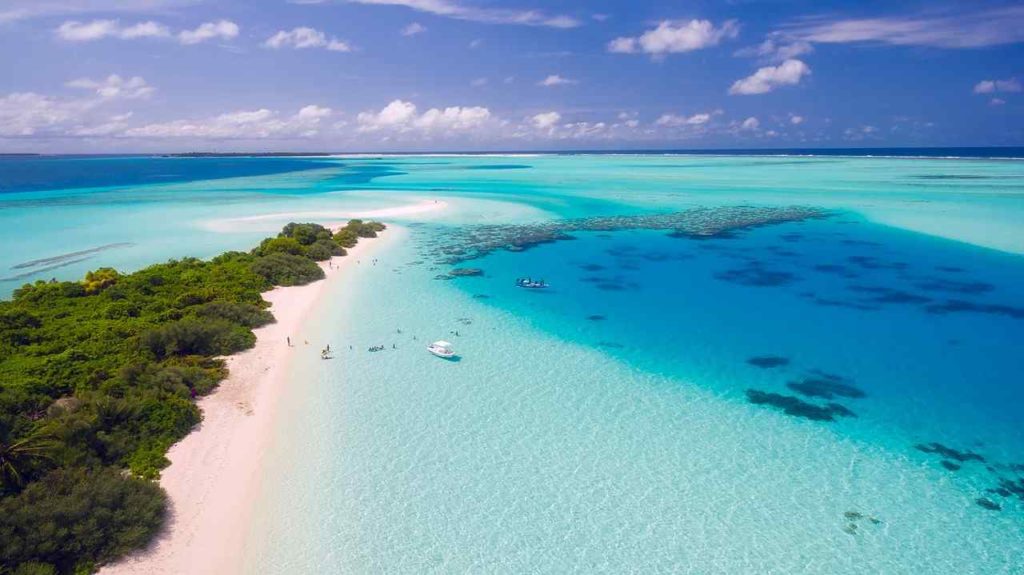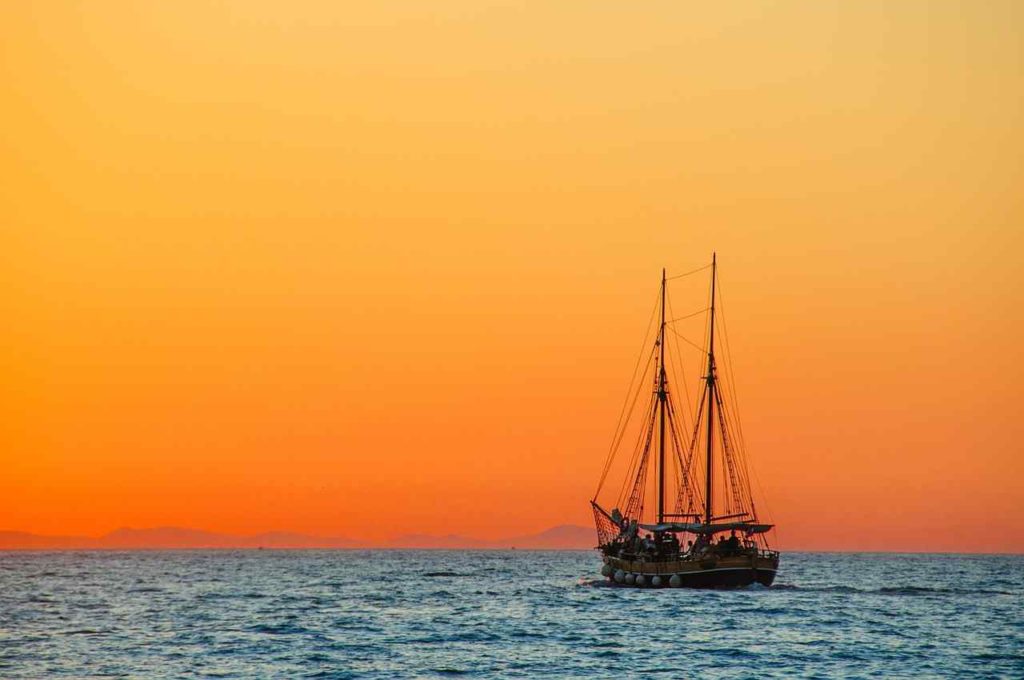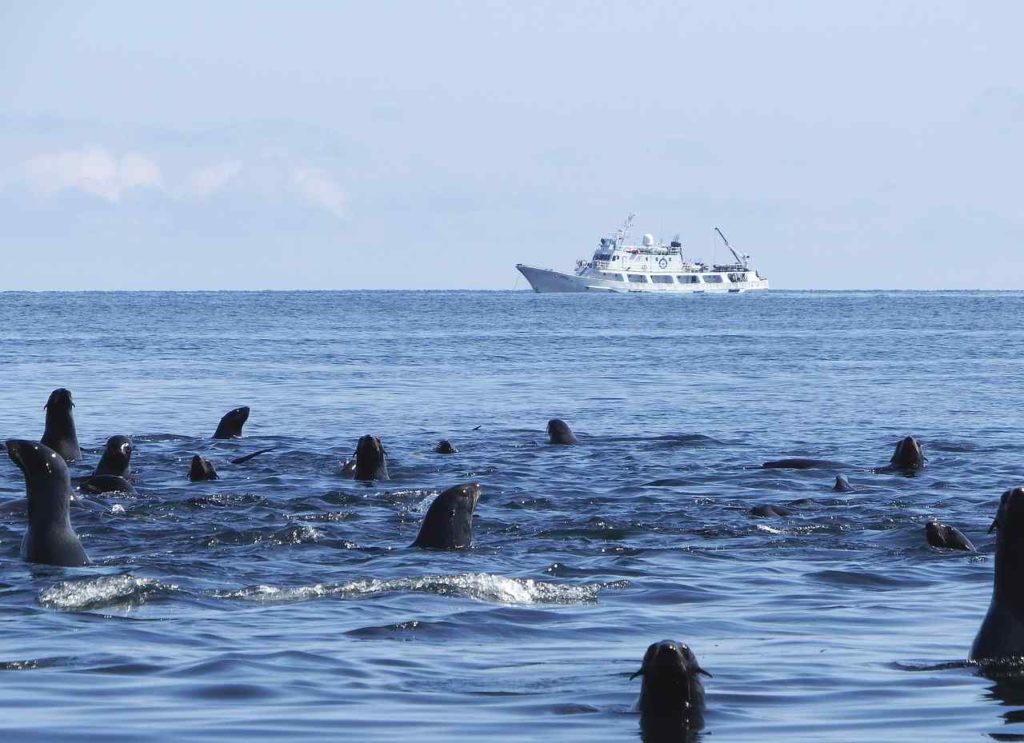As we all know that about 71% of the land is made up of liquid water, of which, oceans and seas form one of the largest portions of the earth’s surface. There are about 113 seas of different depth and sizes and 5 different oceans in the world, each one of them has its own unique characteristics and specialties. All the oceans in the world have a volume of 0.3 billion cubic miles and an average depth of 12,080.7 feet. Here is the list of top 10 biggest seas and oceans in the world.
Largest Seas and Oceans
1. Pacific Ocean-64,196,000 square miles (166,266,877 square kilometers)
Pacific, the largest and the deepest of Earth’s oceanic divisions, covers about 46% of Earth’s water surface. Occupying one-third of Earth’s total surface area, the pacific ocean is larger than all of Earth’s land area combined together. However, Pacific features enormous tidal waves, exotic fish species and other marine creatures, giant kelp forests, breaching whales, hypnotic jelly and much more. The Pacific oceans have approximately more than 25,000 islands and most of them are seen in the south of the Equator in the Southern Pacific.
The ocean got its name from the Portuguese explorer Ferdinand Magellan in 1521 who called the waters as “mar pacifico” means peaceful sea and Pacific means “peaceful”.The average depth of the ocean is 12,467 ft and it also contains the deepest places on earth known as Mariana Trench. Also, around 75% of the volcanoes are located in the Pacific Ocean basin and these volcanoes actually form a ring around the basin and therefore it is called the ring of fire. There are numerous earthquakes happen in this area because of the movement of tectonic plates of the continents and this causes Tsunamis which causes terrible destruction when hitting the land.
There are approximately 25,000 islands in the Pacific ocean and almost all of them are located in the south of the Equator. The islands located in the Pacific ocean are of a different kind such as continental islands, coral reefs, high islands, and lifted coral platforms. The ocean has a good amount of Petroleum and natural gas that are extracted from the continental shelves of New Zealand and Australia’s coasts. Also, the Pacific ocean is home to a large amount of debris and pollution.
Increasing Global warming by burning fossil fuels and releasing carbon dioxide is not only acidifying the atmosphere but also making changes in the Ocean that absorb 30 percent of the CO2 released into the atmosphere. When the ocean absorbs carbon dioxide there are series of reactions that produce hydrogen ions and lead to more acidic waters, There are various reports such as NOAA, where Ocean ph is dropping by 0.1 pH units in the past 200 years. This means ocean water becoming 30% more acidic which is a serious concern.
2. Atlantic Ocean-33,400,000 square miles (86,505,603 square kilometers)
The Atlantic Ocean is the second-largest ocean in the world that covers about 21 percent of the Earth’s surface. The Atlantic Separates North and South America from Europe and Africa and is the busiest ocean in the world to form a major trade route among countries.
Also, in the northern area of the Atlantic Ocean is the Bermuda Triangle, which is also known as “the Devil’s Triangle,” because it is responsible for the mysterious disappearance of more than 50 ships and 20 airplanes over the past century, according to the U.S. Navy. It is believed that the Atlantic Ocean formed during the Jurassic Period and it is also the first ocean to be crossed by an airplane and ship together. The first ship to cross the ocean was the Cunard Line, in the 1850s and the first women to fly across the Atlantic Ocean was Amelia Earhart, in 1928.
Greenland is the largest island in the world located on the Atlantic Ocean. One of the largest oceans in the world is approximately 6.5 times the size of the United States. Also, the ocean is home to the second-largest barrier reef in the world known as Cancun Reef off the coast of Mexico. The largest one if the Great Barrier Reef located off the coast of Australia. There is numerous underwater mountain range in the North Atlantic Ocean called the Atlantic Ridge. There are numerous sea creatures found in the Atlantic Ocean that include humpback whale, sea lion, manatee, Atlantic ghost crab, penguins, the green sea turtle, and various shark species.
The ocean is home to the second-largest barrier reef in the world located on the Cancun Reef off the coast of Mexico. The largest is the Great Barrier Reef situated on the coast of Australia. In the year, one of the most popular ship in the world, Titanic sank in the Atlantic Ocean, however, it has been called as an unsinkable ship. A type of fish known as coelacanth believed to have been extinct for 60 million years, however, it has been caught in the Atlantic Ocean in 1938 off the coast of southern Africa.
Of all the Oceans in the world, the Atlantic ocean is responsible for the highest tides in the world that mainly occurs at the Bay of Fundy, Canada. There are various times in the year when the difference between the high and low tides in this Bay is 16.3 meters. Atlantic ocean is known for its unwanted mountain range known as Mid-Atlantic Ridge (MAR). It starts from northeast of Greenland and ends in the Cape of Good Hope in Africa, The total distance is about 16,000 kilometers and there are only a few spots where it breaks the ocean. Also, the Atlantic ocean was the first ocean to be crossed by the ship and airplane.
3. Indian Ocean-28,400,000 square miles (73,555,662 square kilometers)
The Indian Ocean is the warmest ocean in the world, with Africa to its west, Asia to the north, Australia in the east and Antarctica in the south. It is a large body of saltwater that also includes Madagascar, the world’s fourth-largest island. The Indian Ocean is the third largest of the world’s oceanic divisions, covering 20% of the Earth’s water surface. During the 1500s, the Indian Ocean was being exposed by the sailors who are in a search for the route to Africa, however, during the 19th century the ocean is mostly dominated by the United Kingdom but later when the British Empire declined, it was India and Australia who dominated in the region.
One of the largest oceans in the world has limited sea life as compared to other oceans in the world. It is because of two reasons, Firstly, the temperature of the Indian ocean will make it quite difficult to grow phytoplankton in most of the areas and this is required as a food source to support life in the ocean. Secondly, the ocean has a low oxygen content. The world’s most important ports are located on the Indian ocean namely Richard’s Bay in South Africa, Chennai in Madras India, Durban in South Africa, Columbo in Sri Lanka and Mumbai in Bombay India. The Indian Ocean has the lowest and highest recorded surface salinity levels.
The ocean is facing many pollution issues in the form of oil and ship pollution, specifically in the Red Sea, Persian Gulf, and the Arabian Sea. It has a 5,000 km long mountain range known as the Ninety East Ridge that eventually divides the Indian Ocean into east and west regions. The ocean is known as a closed ocean because it is landlocked by the to its north by Asia in comparison to the other oceans in the world.
The east and west part of Indian Ocean is divided by 5000 kilometers known as the Ninety East Ridge. Also, the sea bed of the ocean connects various continental plates such as African, Indian, and Antarctic at a point known as the Rodriguez Point. Indian ocean is also connected with the Mediterranean Sea through the Suez Canal that can be easily accessible through the Red Sea.
4. Arctic Ocean-5,100,000 square miles (13,208,939 square kilometers)
The Arctic is the smallest of all the oceans in the world, but it is completely surrounded by land with the ocean centered approximately on the North Pole. Being one of the largest oceans in the world, the Arctic ocean is mostly covered by ice and provides habitat to many endangered marine species including manatees, seals, sea lions, turtles and whales and many more. But, scientists have noted the increase in temperatures of the Arctic as a result of global warming which can threaten its biodiversity in the coming years. The North pole is located on the Arctic Circle and there are three kinds of ice covering the area including polar ice, fast ice, and pack ice. Polar bears live and hunt on the ice of the Arctic Ocean. Also, the ocean has a wide variety of marine life like the bowhead whale, grey whale, narwhal, and beluga whale.
The Arctic ocean is home to six types of seals namely, the bearded seal, ribbon seal, ringed seal, spotted a seal, harp seal, and the hooded seal. The nutrients and organisms are being released into the water by the melting of ice directly help in the growth of algae. The algae feed zooplankton which serves as food for sea life. The Arctic Ocean has the largest species of fish as compared to other oceans in the world. Approximately 25% of undiscovered petroleum is believed to be located in the Arctic Ocean. The ocean is covered by an ice cap but that is melting at an enormous rate because of global warming and pollution. If the ice melting continues at the same pace, there will no ice in the Arctic ocean by 2040.
The large part of the Arctic Ocean is covered by the ice cap, however, it has been decreasing continuously because of global warming and pollution. If the situation is continuous, there will be no ice in the Arctic Ocean. According to scientists and researchers, it can happen by the end of 2040. Now, there will be more consequences, if the ice disappears, polar bears living and hunting on the ice of the Arctic Ocean will disappear. Polar bears rely on the ice for hunting.
The deepest point of the Arctic Ocean is known as Litke Deep in the Eurasian Basina at 5,450 meters. The temperature at the surface of the ocean is constant which is near to the freezing point. The ocean is home to some of the important ports and hubs such as Churchill in Canada, Murmansk in Russia and Prudhoe Bay in the USA.
5. Coral Sea-1,850,000 square miles (4,791,000 square kilometers)
The Coral Sea, named for its numerous coral formations lies to the southwestern parts of Pacific Ocean. The Coral sea also highlights the Great Barrier Reef, which is the largest coral reef in the world, extends up to 1,200 miles towards the Australian northeast coast. The sea has a subtropical climate and it experiences typhoons, especially from January to April. The sea contains numerous reefs and islands. The world’s largest reef system, the Great Barrier Reef contained in the Coral Sea. The reef is so large that it can be seen from space and hence comes under seven natural wonders of the world.
One of the biggest seas has a warm climate and quite stable, however, it is prone to tropical cyclones. It is believed that the coral sea basin has been formed approximately 58 million years ago. The Coral Sea is home to sponges, worms, anemones, lobsters, crayfish, crabs, and prawns and island of the coral sea contains approximately 2,000 species of plants. It is also home to six species of sea turtles namely, the Olive Ridley, flatback turtle, loggerhead sea turtle, hawksbill turtle, green sea turtle, and the leatherback sea turtle. It is also home to 17 species of snakes and the world’s most venomous sea snake – the Aipysurus duboisii.
6. Arabian Sea-1,491,000 square miles (3,861,672 square kilometers)
Located between the Indian and Arabian peninsulas in the northwestern section of the Indian Ocean, the Arabian Sea is one of the largest seas in the world that forms a major trade route between India and other European countries from over centuries. Also, the Arabian Sea has a rich history of merchant water transportation and is historically known as the Erythraean Sea. The sea has been renamed after the Arabian merchants who dominated the sea from the 9th century to the late medieval period of history.
The largest river that flows into the sea is the Indus River, however, there are other rivers that include the Narmada River, the Tapi River, and the Sabarmati River. The sea is a coastline to countries like India, the Maldives, Pakistan, Oman, Yemen, and Somalia and some of the major ports include Okha Port, India’s Kandla Port, Navi Mumbai, Pakistan’s Gwadar Port, Oman’s Port of Salalah and Pakistan’s Gwadar Port. It has two basins the Arab Basin and the Somali Basin separated by the Carlsberg Ridge.
7. South China Sea-1,148,000 square miles (2,973,306 square kilometers)
The South China Sea is a part of the Pacific Ocean, encompassing an area from the Karimata and Malacca Straits to the Strait of Taiwan. South China sea supports about one-third of the world’s shipping transportation which carries over $3 trillion in trade each year. Also, it encompasses lucrative fisheries that are crucial for the food security of millions of people in Southeast Asia.
Apart from this, there are huge oil and gas reserves beneath its seabed. It is believed that the South China Sea has been created approximately 45 million years ago and there are approximately 250 small islands and reefs situated on the sea. According to the reports, there is approximately one-half of all the shipping boats in the world pass through the South China Sea. It has a unique marine ecosystem that includes, giant oysters, endangered sea turtles, and giant oysters. It is one of the largest seas in the world.
8. Caribbean Sea-971,000 square miles (2,514,878 square kilometers)
The Caribbean Sea is a sea of the Atlantic Ocean in the tropics of the Western Hemisphere, renowned for it’s clear, warm water with a steady temperature of about 75 degrees Fahrenheit. It is one of the largest seas in the world with its deepest point is the Cayman Trough, which lies between the Cayman Islands and Jamaica. Also, the Caribbean Sea has the world’s second-biggest barrier reef, known as the Mesoamerican Barrier Reef that it a major tourist destination.
It is believed that 14% of the total coral reefs are located in the Caribbean Sea. It has an average temperature of 27 degrees Celsius with only a little variation of 3 degrees. The largest island in the Caribbean Sea is Cuba and is home to 90 mammal species that include sperm whales, dolphins, humpback whales, manatees and seals. The Caribbean Sea produces 170 million tons of oil every year making it one of the largest oil-producing regions in the world.
9. Mediterranean Sea-969,000 square miles (2,509,698 square kilometers)
The Mediterranean Sea is surrounded by the Mediterranean region and almost completely enclosed by land. The name Mediterranean comes from the Latin word meaning “in the middle of the Earth.” Apart from being one of the biggest seas in the world, the Mediterranean Sea is home to some of the world’s busiest shipping routes. A recent study has also found that the Mediterranean Sea is experiencing the effects of global warming, which can threaten marine life in recent decades.
The Mediterranean Sea separates Europe, Africa, and Asia and the sea is connected to the Atlantic Ocean by a narrow passage known as Strait of Gibraltar. The sea is surrounded by land in all three directions, on the north by Europe, on the south by North Africa, and on the east by the Middle East. The sea has two main subregions i.e the Eastern and Western and further it is divided into smaller water bodies namely, the Strait of Gibraltar, Alboran Sea, Balearic Sea, Ligurian Sea, Tyrrhenian Sea, Ionian Sea, Adriatic Sea, and the Aegean Sea.
10. Bering Sea-873,000 square miles (2,261,060 square kilometers)
The Bering Sea is located between Alaska and Siberia and is one of the largest seas in the world, known for having some of the most harrowing and unpredictable weather conditions on Earth. It also hosts a varied habitat for aquatic life with more than 400 species of fishes. But, many of these species are on the verge of extinction according to The United Nations Environment Programme (UNEP).
There are various marine mammals found in the Bering Sea that includes the polar bear, the orca, the walrus, the Steller sea lion, and the northern fur seal. One of the rarest whales in the world known as the North Pacific right whale seen in the Bering Sea. The sea is known for its seabird species and approximately 20 million seabirds breeding each year along with its shores.
These are the largest oceans and seas in the world. Do post your comments.

